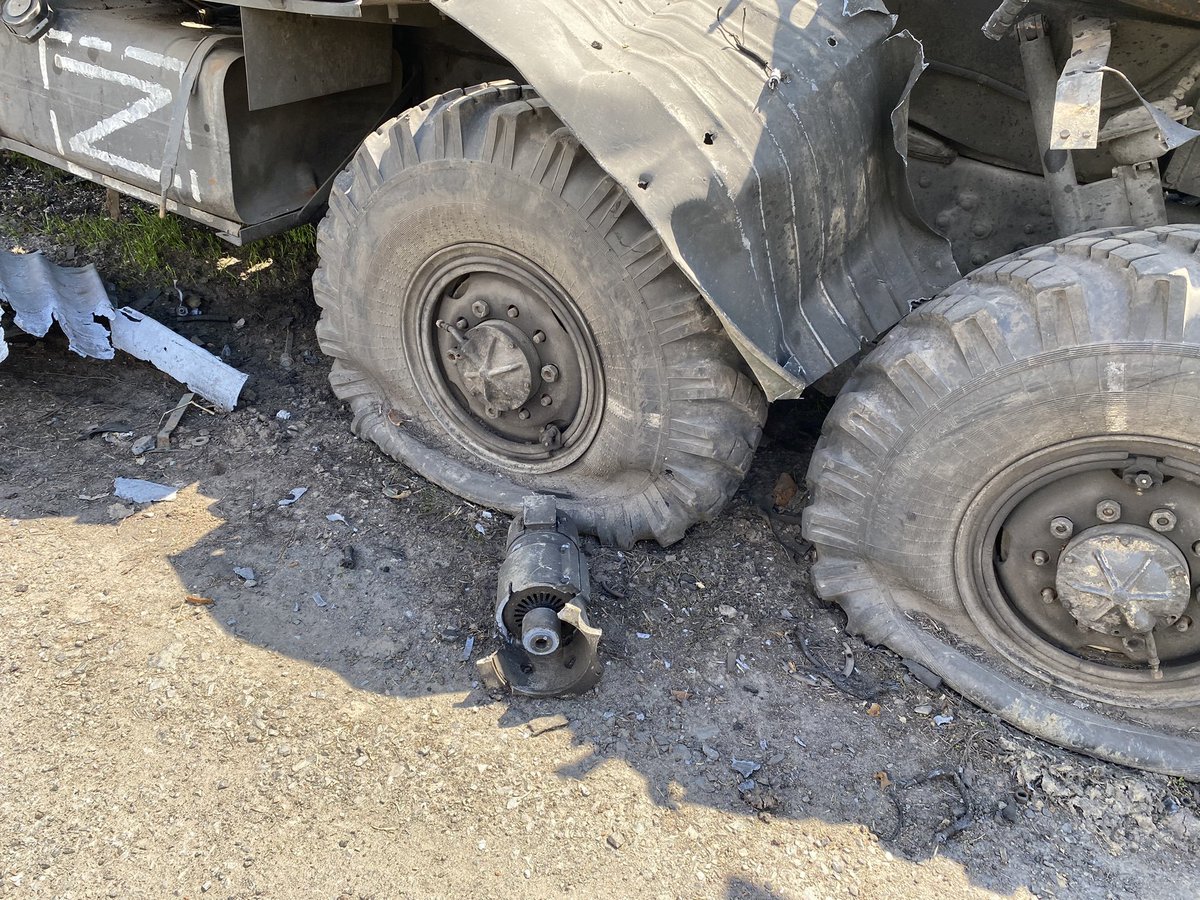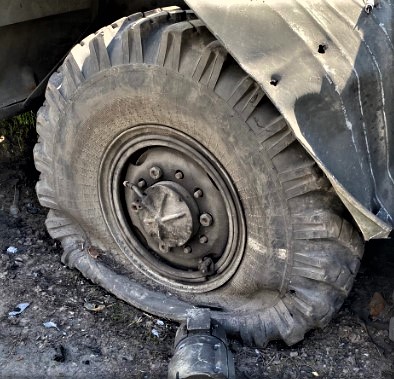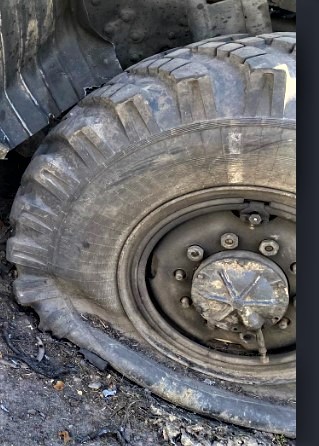
This is something tweeted at me which needs to be addressed as it is a common assumption people make which isn't true, AKA Russian weapons are all trash.
It simply is not true.
I'm will explain why that is using the design history behind the M-1 Abrams vs. the T-90.🧵
1/
It simply is not true.
I'm will explain why that is using the design history behind the M-1 Abrams vs. the T-90.🧵
1/
https://twitter.com/6060Bt/status/1520788579638677506
Let's take the S-300 surface to air missile system in Ukrainian & Russian hands.
In Ukrainian hands it has been shooting down the supersonic Kh-31 anti-radar missile and various Russian cruise missiles.
2/



In Ukrainian hands it has been shooting down the supersonic Kh-31 anti-radar missile and various Russian cruise missiles.
2/




A version of the S-300 on the Moskva, the S-300F, NATO reporting name SA-N-6, failed to stop a Ukrainian Neptun cruise missile.
The difference was the human capital behind the weapons system.
2/



The difference was the human capital behind the weapons system.
2/




Col Trevor Dupuy put a whole lot of skull sweat into looking at quantitative historical analysis to determine, in US Military funded studies, the qualitative edge of US weapons over Russian weapons.
The edge for same generation weapons were small.
3/
en.wikipedia.org/wiki/Trevor_N.…
The edge for same generation weapons were small.
3/
en.wikipedia.org/wiki/Trevor_N.…
This was important because his reports were being read by the United States Army Training and Doctrine Command (TRADOC) from 1977 to 1981.
That was when General Donn A. Starry was commander of TRADOC.
That was when General Donn A. Starry was commander of TRADOC.
Donn A. Starry was previously commanding general of United States Army Armor Center and School before TRADOC & inspected the Golan Heights & Sinai battlefield after the 1973 Arab-Israeli War.
He coined a phrase that dominated US Army planning from then onwards.
4/
He coined a phrase that dominated US Army planning from then onwards.
4/
"If you can see it, you can hit it.
If you hit it, you will kill it."
Starry used the 1973 battle data, Dupuy's work and a council of WW2 greybeard armor experts to design/procure the M1 Abrams Tank.
5/
If you hit it, you will kill it."
Starry used the 1973 battle data, Dupuy's work and a council of WW2 greybeard armor experts to design/procure the M1 Abrams Tank.
5/

Human capital AKA training & organization is the key to combat effectiveness.
Dupuy first developed Quantified Judgement Method of Analysis (QJMA) and later the Tactical Numerical Deterministic Model (TNDM) to look at this.
6/
dupuyinstitute.org/tndm.htm
Dupuy first developed Quantified Judgement Method of Analysis (QJMA) and later the Tactical Numerical Deterministic Model (TNDM) to look at this.
6/
dupuyinstitute.org/tndm.htm
The latter is a empirically based combat model with a database derived from historical research the US Army in particular funded over 30 odd years.
The effect on the M-1 Abrams was two fold.
1st was an emphasis on long term fightability in a chemical environment for
7/
The effect on the M-1 Abrams was two fold.
1st was an emphasis on long term fightability in a chemical environment for
7/
...the Abrams. This isn't only the human interface of the tank, but the ability of an average, tired crew, to fight well after 5-days of little sleep.
The 2nd and even more important was the emphasis on survivability of the Abrams tank crew.
8/



The 2nd and even more important was the emphasis on survivability of the Abrams tank crew.
8/




The separation of the ammo from the crew with blow out panels on the Abrams is the most visible design feature reflecting these design choices compared to a Russian T-90's autoloader carrousel.
9/
9/
https://twitter.com/Osinttechnical/status/1507414699024998403
An M-1A2 Abrams after 5-days of combat with little crew sleep will be more operational because more preventive maintenance will have been done compared to a T-90.
The Abrams crew will be more rested after 5-days inside its tank.
And the M-1 is more combat capable than a
10/
The Abrams crew will be more rested after 5-days inside its tank.
And the M-1 is more combat capable than a
10/
...T-90 after a crew casualty.
A T-90 with a rested & well trained crew plus the latest French Thales thermal sites will be able to kill M-1 Abrams at range a'la Gen Starry's phrase.
And average T-90 crew after 5-days will likely lose to a similarly 5-days tired average
11/


A T-90 with a rested & well trained crew plus the latest French Thales thermal sites will be able to kill M-1 Abrams at range a'la Gen Starry's phrase.
And average T-90 crew after 5-days will likely lose to a similarly 5-days tired average
11/



...Abrams tank crew all other things being equal.
And the Abrams crew is far more likely to survive it's tank being knocked out than a T-90 crew.
12/

And the Abrams crew is far more likely to survive it's tank being knocked out than a T-90 crew.
12/
https://twitter.com/mhmck/status/1506008839774425094

This emphasis on crew fightability & survivability is another expression of the American "Manpower is valuable & scarce" sociology in tank warfare.
13/
13/
https://twitter.com/TrentTelenko/status/1517323409377554432
The US Army fields two Abrams with two NCO's, six enlisted and 140 tons of tanks compared to three T-90 with an officer, eight conscripts, and 135 tons of tanks.
When both sides lose a tank & get a replacement tank. You will get back three Abrams crew on average while losing
14/
When both sides lose a tank & get a replacement tank. You will get back three Abrams crew on average while losing
14/
...an entire T-90 crew from ammo detonation.
Now rinse & repeat losing tanks on both sides a total of three times.
Five of the eight original Abrams crew will be in those two crewed replacement tanks and either none or maybe two of the nine original T-90 crew will be alive
15/
Now rinse & repeat losing tanks on both sides a total of three times.
Five of the eight original Abrams crew will be in those two crewed replacement tanks and either none or maybe two of the nine original T-90 crew will be alive
15/
...to fight.
Furthermore, the emphasis on crew survivability means a knocked out Abrams is more likely to be put back into service quickly.
A T-90 with detonated ammo & a turret pop is a complete loss of tank & crew.
16/
Furthermore, the emphasis on crew survivability means a knocked out Abrams is more likely to be put back into service quickly.
A T-90 with detonated ammo & a turret pop is a complete loss of tank & crew.
16/
So the US Army is maybe losing one Abrams permanently and returning two tanks back to service with five of eight original crew
While the Russian's have spare parts from their three tanks, needing three replacement T-90's & maybe two crew with seven to nine green replacements
17/
While the Russian's have spare parts from their three tanks, needing three replacement T-90's & maybe two crew with seven to nine green replacements
17/
The fourth round between the two Abrams and three T-90's is going to go 3-to-0 in favor of the Abrams because they have five veteran crewmen compared with two-to-none of the original T-90 crewmen.
This is what is referred to as a
18/
This is what is referred to as a
18/
"Lanchester Square collapse," a special condition of Lanchester’s Square Law that involves a set of differential equations that model the relative strengths and interaction of two armies.
19/
lernfreude632531525.wordpress.com/2021/03/22/lan…
19/
lernfreude632531525.wordpress.com/2021/03/22/lan…
Short form: After a long period of even attrition, one side's combat capability collapses.
The fall of Japanese airpower in the South Pacific in WW2 is a classic example of such a "Lanchester Square collapse."
20/
The fall of Japanese airpower in the South Pacific in WW2 is a classic example of such a "Lanchester Square collapse."
20/
TRADOC's push to make fightability & survivability the design objectives of the Abrams tank was an organizational recognition of human capital as being the key resource in winning a war of attrition.
When the "enemy got a vote" and knocked out an Abrams. The Abrams
21/
When the "enemy got a vote" and knocked out an Abrams. The Abrams
21/
...would deliver back more of the crewmen to fight another day.
A fully spec-ed out T-90 with a rested, well trained, crew could deliver nearly the same combat power as an Abrams.
It can't do so with poorly trained crews nor with dead tired crews.
22/
A fully spec-ed out T-90 with a rested, well trained, crew could deliver nearly the same combat power as an Abrams.
It can't do so with poorly trained crews nor with dead tired crews.
22/
The T-90 as a weapon isn't necessarily inferior to a M-1 Abrams in any one engagement.
The T-90 was built as a more "expendable of tank crew" expendable tank for a short war.
The Russians design choice of expendable tank with an expendable crew made it cost less.
23/
The T-90 was built as a more "expendable of tank crew" expendable tank for a short war.
The Russians design choice of expendable tank with an expendable crew made it cost less.
23/
The design goals of "Fightability" & "Survivability" together made the Abrams a stingy of crew loss tank, which could be counted on to be knocked out repeatedly & return to service.
24/
24/
The Abrams was built as a tank which will save its crew for winning a long war of attrition.
The battlefield results of these different design choices are what we are seeing in Ukraine today.
25/End
The battlefield results of these different design choices are what we are seeing in Ukraine today.
25/End
• • •
Missing some Tweet in this thread? You can try to
force a refresh







